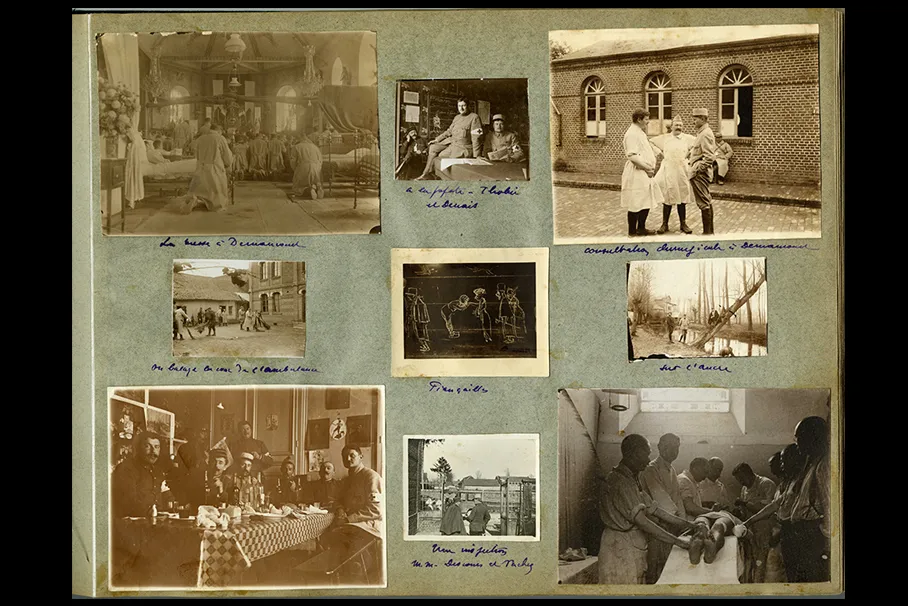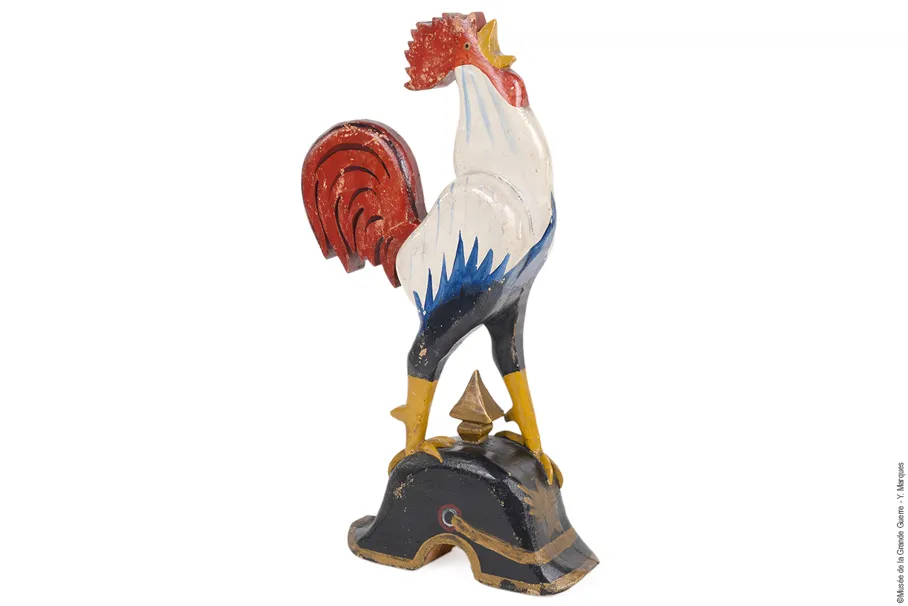
Photo album

The Gallic Rooster’s importance as a French national symbol was particularly strong during the Great War. The 1830 and 1848 revolutions, and particularly the Third Republic, made it a central symbol, and by the beginning of the 20th century it was a quasi-official emblem of the Nation, if not the State.
The qualities attributed to it – combativeness, pride, courage, generosity, daring and fertility – were perceived via the animal as national qualities. During the conflict, the use of the Rooster as an allegory of France increased, and the bird would appear in propaganda images, consistently victorious over the German eagle, fostering national patriotism in the face of the enemy.
This pretty painted wooden statuette, sculpted by an unknown hand, depicts a tricolour rooster with a haughty, triumphant expression, crowing as it tramples the hated pointed German helmet. The patriotic rooster has fought well and is showing off its trophy.
Rooster statuette, first quarter of the 21st century, wood, acrylic paint, 30 x 15 x 5.5 cm. Inventory no.: 2006.1.941